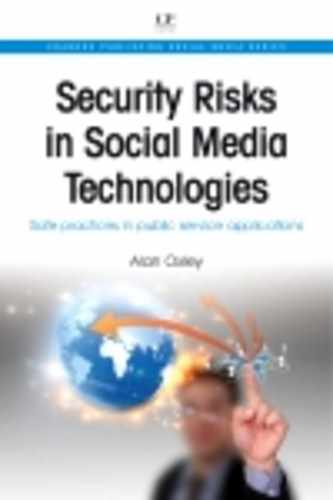Index
acceptable use policies See AUPs
statistics, 14
Flickr, 22
applications, 33–88
accessing Twitter data, 233–6
geo-togg, 28
location-based, 28
SaaS, 131
social media, 7
Web 2.0 patterns, 22–3
within Twitter, 18
architecture of participation, 25–6
centralized, 90
information, 140
peer-to-peer, 21
streaming on Twitter, 233
acceptable use practices, 169
cloud computing, 110
Mumbai, 48
to information systems in public sector, 94–7
types of attack, 236–8
Australian Secret Intelligence Service, 95
bodies involved in security, 149–50
bogus Twitter account, 106
school online media, 178
citizen reporters, 69–70
banning, 13
emergencies, 59–73
law enforcement, 55–6
monitoring what they say, 41
online services to, 2–3
other uses of Twitter, 79
CFP: Technology Policy ’08, 3
relevant to topic of book, 229–30
using videos, 59
Web 2.0, 4
cost-benefits, 207
Edmodo, 181
attachments, 103
begging, 102
Grum botnet, 102
marketing, 35
enterprise applications, 42
Facebook Places, 28
future, 27
in court, 55
inter site communication, 17
law enforcement, 56
schools, 181
sentiment analysis, 76
tag gardening, 22
fires, 62–3
general public See citizens
AUPs, 157–71
call for citizen engagement, 1–3
Chinese websites, 95
impersonation of a minister, 106
international aid, 80
jury service, 55
politicians’ usage of social media, 43–4
security controls, 119–53
sharing of information, 46–7
US school expenditure, 57
US Twitter accounts, 79
wisdom of the crowd, 42
VIPs comments about government, 45–6
group Twitter accounts, 79
IBM Center for the Business of Government, 229
Information Systems Audit and Control Association, 137
international aid, 80–2
– See also Web 2.0
access, 2
IP, 134
large file transfer, 5
statistics, 9
teaching and learning, 57
transport layer security, 245
Voice over Internet Protocol, 134
commercial, 36
Google News, 10
Habitat, 107
harness collective intelligence, 6–7
impact, 80
law enforcement, 56
News International, 96
statistics, 10
notification system, 255
open public services, 2–4
schools, 175–87
security controls, 117–56
e-petitions, 52
ease of creation, 39
Google, 37
general security, 90
privacy, 91–4
policy-making, 3
secure computing, 243–4
public service applications, 33–88
schools, 175–87
acceptable use policies, 169–71
products for parental involvement, 255–6
security threats, 109
social media for teaching and learning, 56–9
security, 90–4
security control plan, 202
security risks, 89–115
due to increased contacts, 106
internet awareness, 137
SMS, 14
social media, 1–32
social media sites, 1–32
social networking, 9–11
names, 11
sentiment analysis, 76
teaching and learning, 56
trust, 92–3
technology skills, 58
collaborative production, 49
Facebook and Twitter policy, 248
in secure computing, 243–6
of service agreement, 127
participation-collaboration pattern, 6
security objectives, 91
threats, 89–115
computing, 245
internal and external, 126
National Strategy for Trusted Identities in Cyberspace, 118
path, 122
Trusted Computing Group, 245
trusted path, 122
application programming interface, 233–6
direct messages, 111
example, 78
monitoring of, 41
shortened URLs, 104
use by public figures, 43–4
uses, 79
Twitter See tweet
Twitter users, 14–15
advice for schools, 170–1
bodies involved in security, 150
BT Tradespace, 35
Communications Electronics Security Group, 145
e-petitions, 51
Facebook users, 9
FireEye, 102
Get Safe Online, 166
hacking, 95
Parent Teacher Online, 255
risk management, 129
social media in court, 55
UK Security and Resilience Industry Suppliers’ Community, 150
..................Content has been hidden....................
You can't read the all page of ebook, please click here login for view all page.
